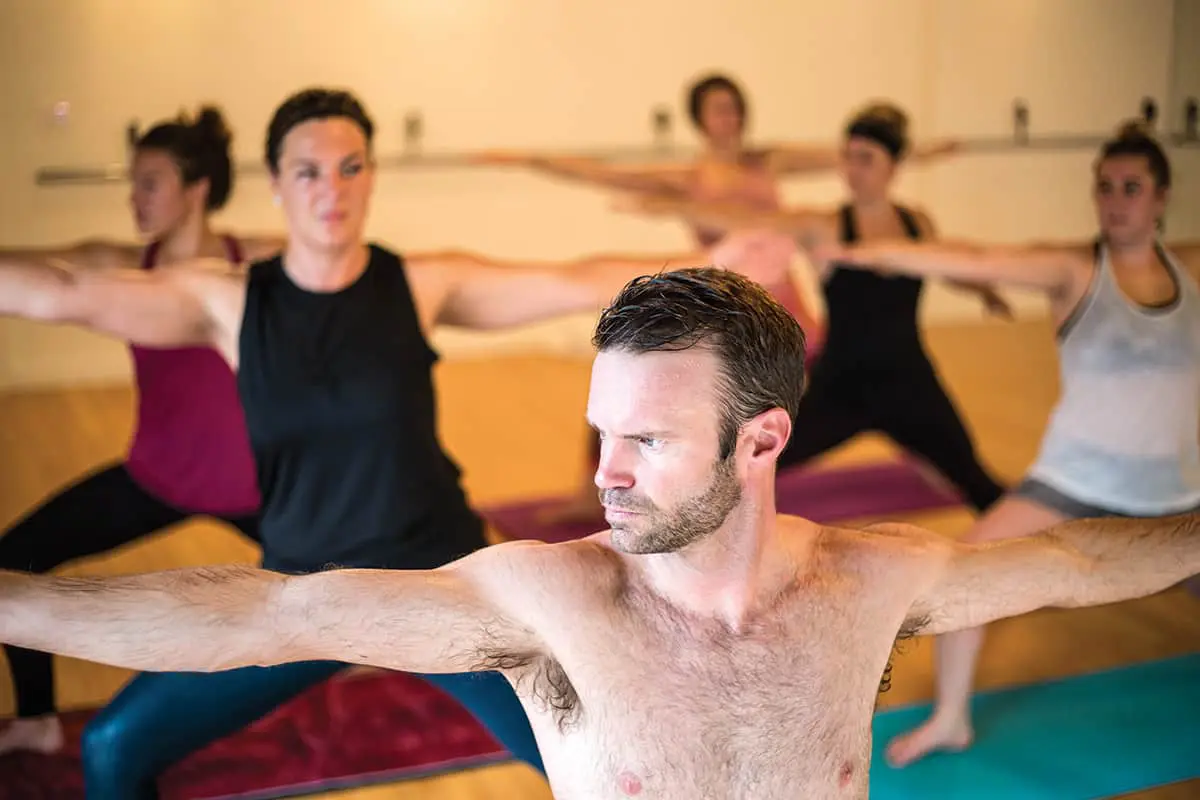By Molly Absolon // Photography by Ryan Dorgan
–
I step into the yoga room at Inversion Yoga in Jackson and am hit by a wave of damp, hot air. People line up their mats without speaking. Some lie on the floor; others begin stretching. I move to the back of the room where, as a newbie to hot yoga, I can get a good view of others. Our teacher comes in, introduces herself, and we begin.
Five minutes into the class I start to sweat. At first, small beads of perspiration layer my skin. Then, as the poses became harder, the sweat begins flowing, dripping down onto my mat and soaking through my T-shirt.
My class lasts an hour.
When it is over, I leave the room feeling empty and light. It could be dehydration (no one told me to hydrate the day before), or perhaps I am experiencing the cleansing effect that many people seek in hot yoga.
In the 1970s, a yogi from India named Bikram Choudhury designed—and tried unsuccessfully to patent—a practice of twenty-six poses and two breathing exercises conducted in a studio heated to 105 degrees Fahrenheit with 40 percent humidity. The heat and humidity of the studio mimicked the environmental conditions found in India that allowed practitioners to go deeper into their poses, enhancing flexibility. The heat also was said to help people release toxins through their sweat. And that’s not all: Bikram Yoga’s website claims that “these twenty-six postures systematically work every part of the body to give all the internal organs, all the veins, all the ligaments, and all the muscles everything they need to maintain optimum health.”
These claims have little scientific backing, but hot yoga enthusiasts aren’t bothered by the lack of hard data. For them, they just feel the difference.
Today, hot yoga is one of the most popular forms of yoga practiced in the United States. Still, not all hot yoga follows the rigid Bikram model, and many studios have moved away from the Bikram name. Some of Inversion’s classes follow Choudhury’s model, but they also offer other forms of hot yoga, such as Vinyasa Flow, Power, and Maui Yoga, to name a few. These classes are conducted in a room with a slightly cooler temperature and offer something much different than the twenty-six-posture format. Still, the idea of using heat to deepen people’s practice runs through all the options.
“What draws me to hot yoga is the great workout,” says Jackson local Virginia Schrader, who tries to make it to at least three classes a week. “I can get into the postures with time and correct alignment, and really work toward my edge. The mind-body connection for me is huge, as it relaxes me immensely.”
Debi Thompson, another Jackson local, also takes hot yoga classes at Inversion regularly. When Thompson, who practices a variety of yoga styles at home as well, decided to try a formal class, she was drawn to the sense of security she’d get from doing the same postures every time. Now she knows what to expect, allowing her to concentrate on the poses without thinking about what comes next.
As for me, I’m not much of a yogi (in the literal sense). My body is tight and inflexible, making me frustrated by my inability to get into poses. But hot yoga seems different. Maybe the heat really did loosen my muscles. Maybe the poses were easier for tight bodies like mine. Regardless, I found the class more accessible than other ones I’ve taken, and I loved the feeling of emptiness I got from sweating it out for an hour.
Inversion offers a sixty-minute hot yoga class that is ideal for beginners like me. For more information on their offerings, check out inversionyoga.com.

